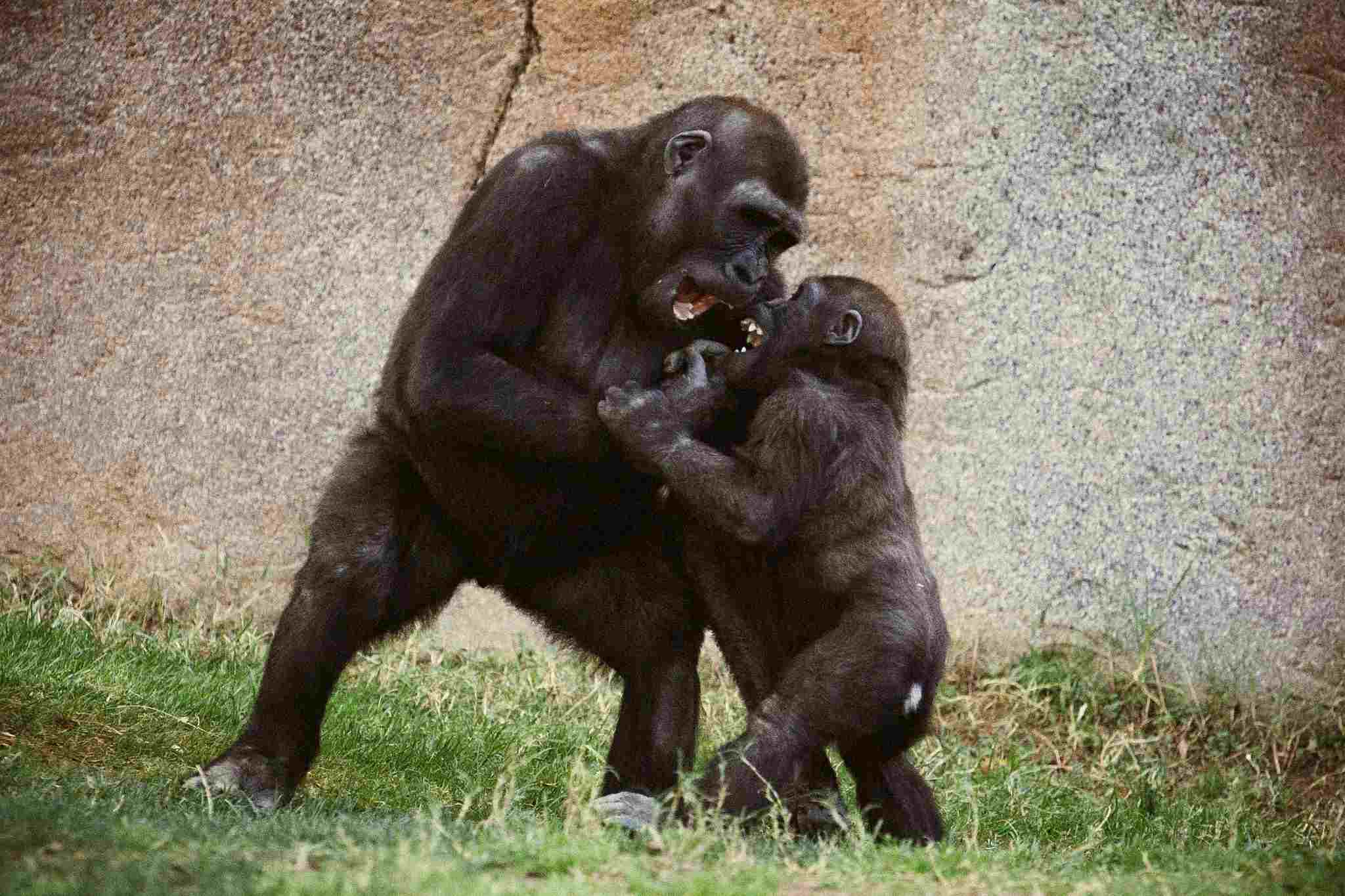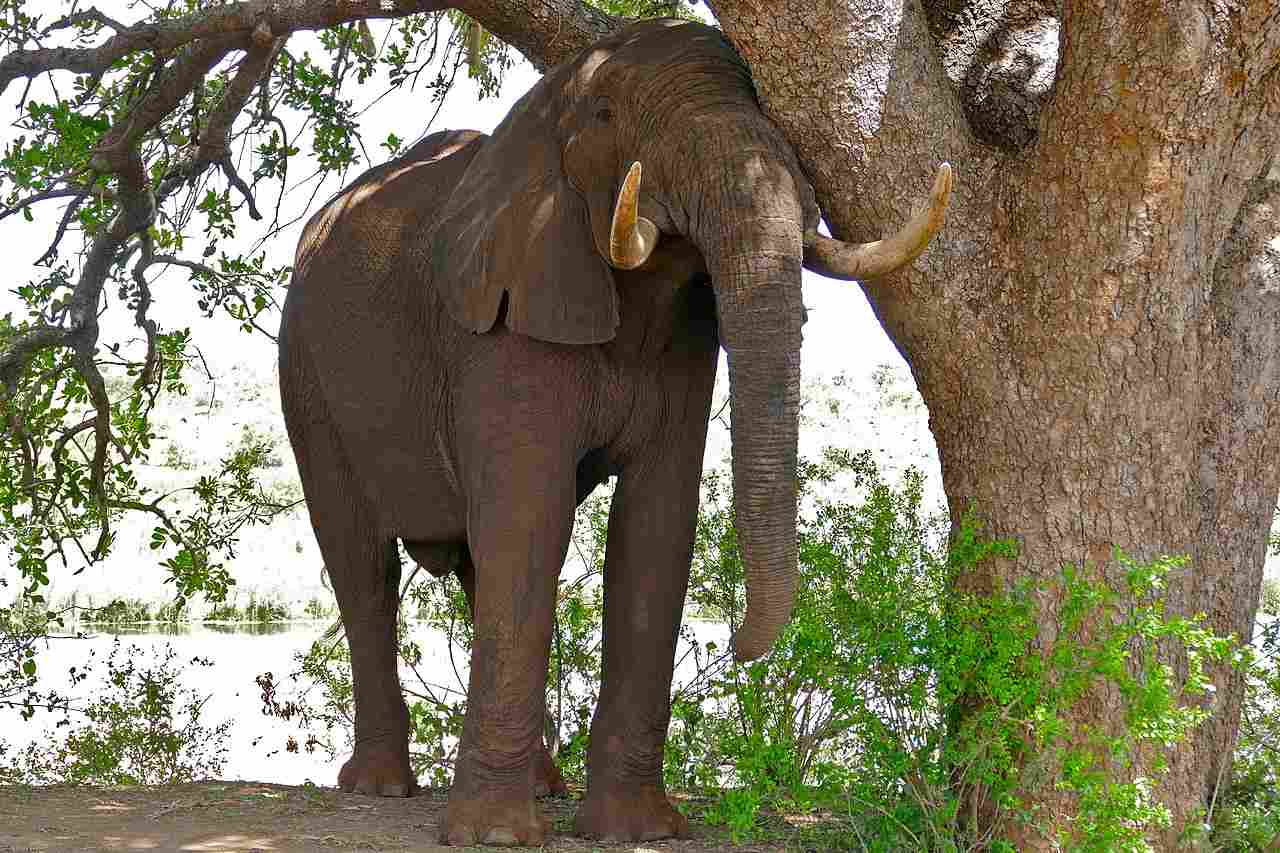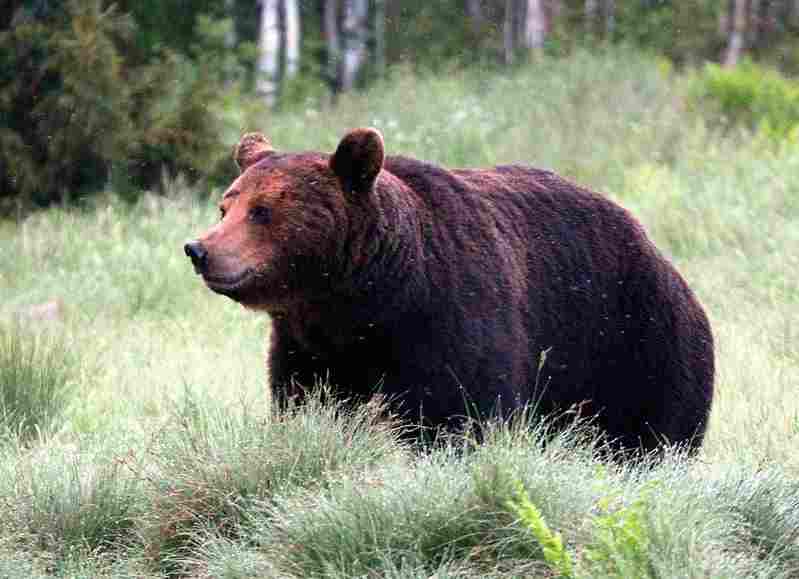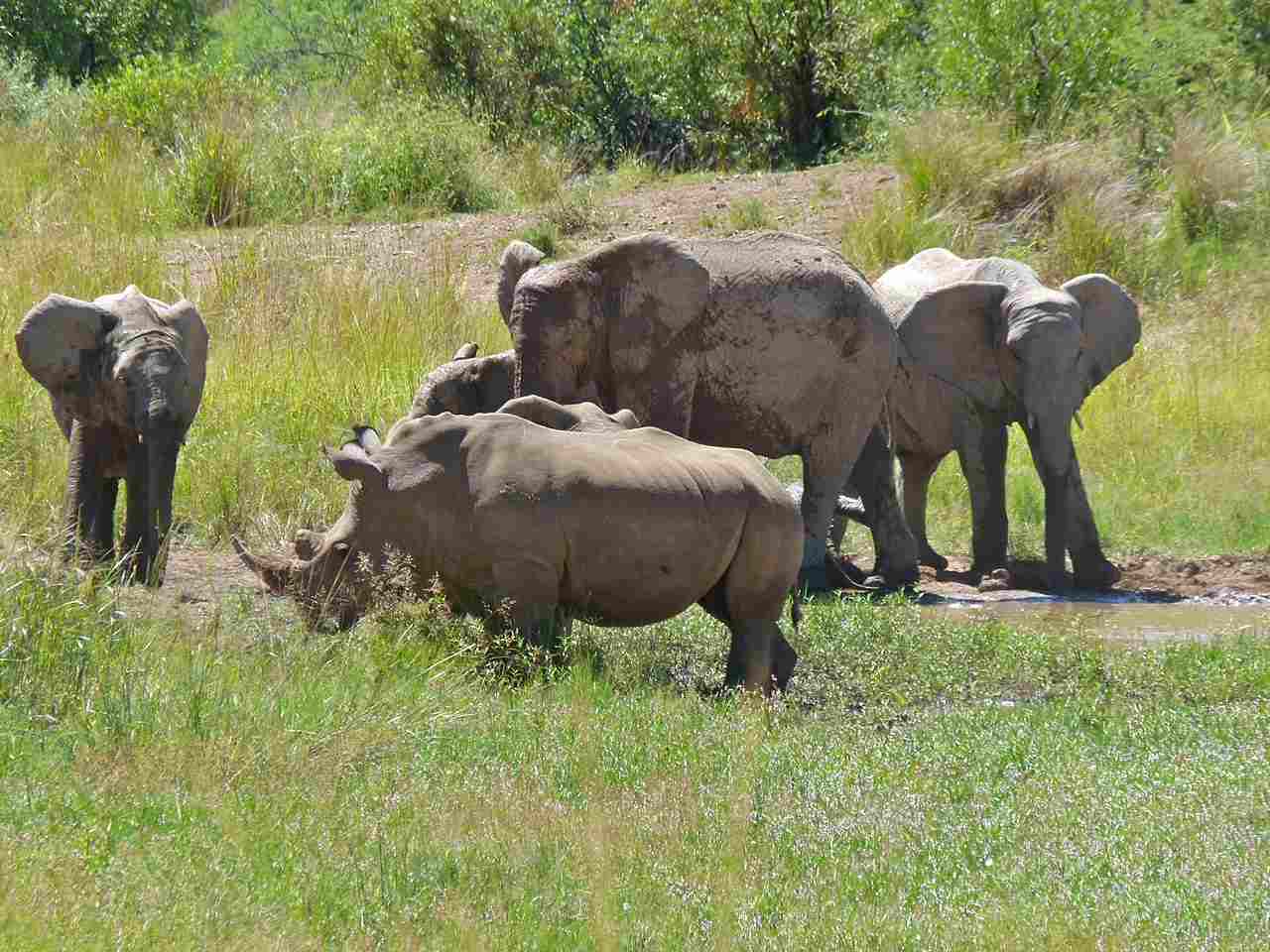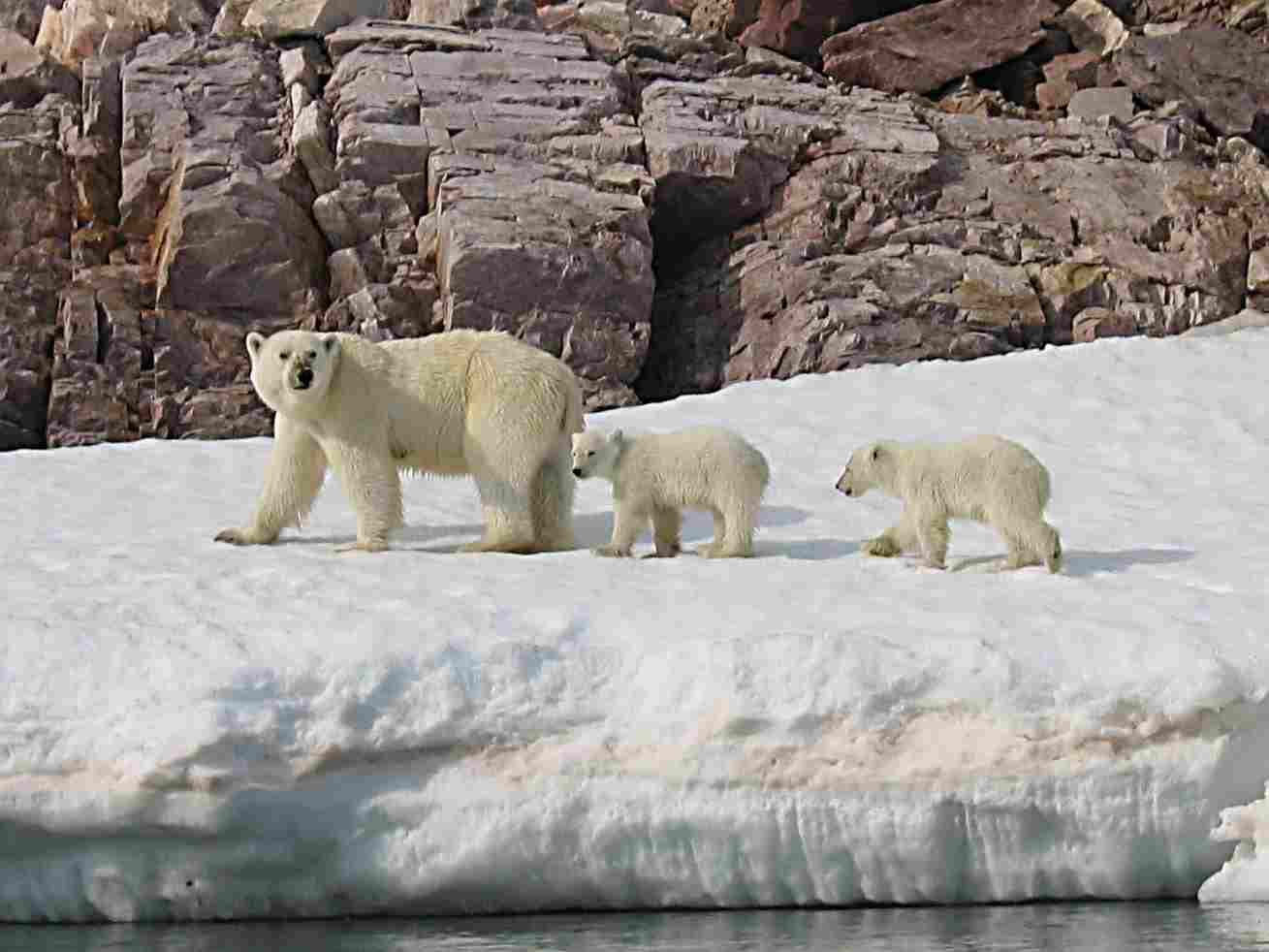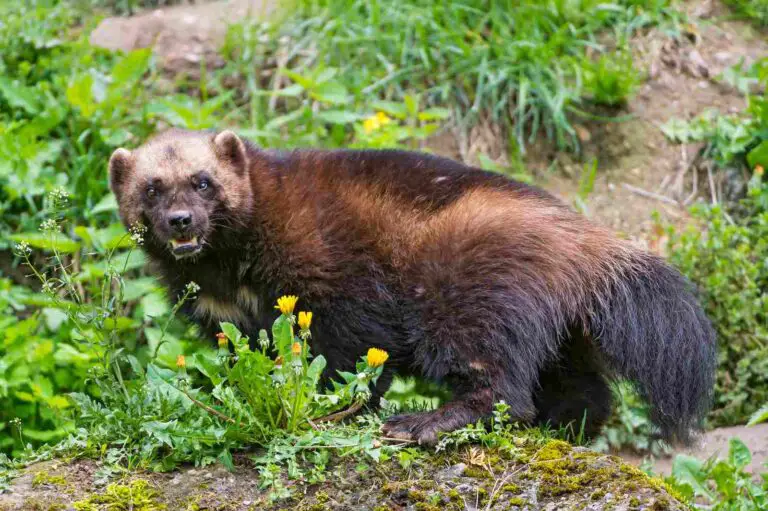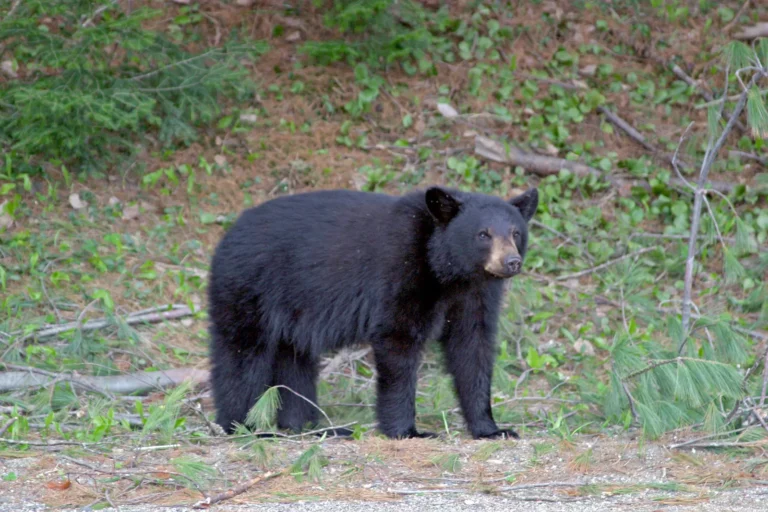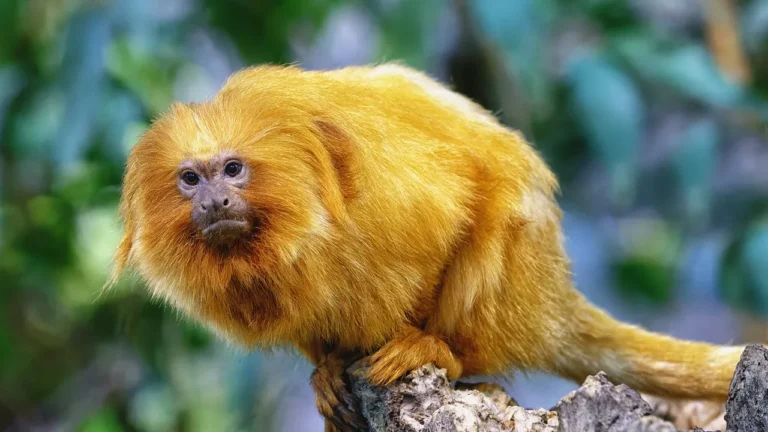Elephant Vs Mammoth Size, Weight, Ecological Comparison
Mammoths had a slight advantage over elephants in terms of size and weight, making them potentially more powerful in a physical confrontation. Their massive bodies and long, sharp tusks give them the ability to overpower and potentially kill elephants, although given the similarity of both animals, this outcome can vary.
This article will explore various factors that can be used to compare these two large mammals, shedding light on their differences and highlighting the unique attributes of each.
Reasons Why a Mammoth Will Win an Elephant In a Fight/Physical Confrontation
I). Larger Size and Heavier Weight
One of the main reasons why a mammoth would have the advantage over an elephant in a fight or physical confrontation is its larger size and heavier weight. Mammoths were slightly larger than elephants, with some species reaching heights of up to 14 feet at the shoulder, compared to the average height of around 10-12 feet for elephants. This extra height and overall size would give mammoths a greater reach and more leverage in a fight, allowing them to deliver more powerful blows.
In addition to their larger size, mammoths also had a much heavier weight compared to elephants. While elephants can weigh up to 12,000 pounds, mammoths could weigh up to a staggering 20,000 pounds.
This additional weight would give mammoths a significant advantage in terms of sheer force and impact. With their massive bodies, mammoths would be able to deliver crushing blows to elephants, potentially causing serious injuries or even death.
II). Longer Tusks
Another factor that would give mammoths an edge in a fight is their longer tusks. Mammoths had impressive curved tusks that could grow up to 16 feet in length, while elephants typically have tusks that reach around 6 feet. The longer tusks of mammoths would provide them with a greater reach and more effective weapons in a physical confrontation. They could use their tusks to stab, slash, or impale their opponents, causing severe injuries.
The combination of larger size, heavier weight, and longer tusks would make mammoths formidable opponents for elephants in a fight or physical confrontation. These advantages would give mammoths the ability to overpower and potentially defeat elephants, making them the more dominant species in such encounters.
*Details of Comparison
1). Taxonomy
The taxonomy of elephants and mammoths reveals interesting similarities and differences between these animals. Both belong to the same genus, but they are classified as different species. Elephants are classified as Elephas maximus (Asian elephants) and Loxodonta africana (African elephants), while mammoths are classified as Mammuthus primigenius.
When comparing the taxonomy of these animals, it is important to note that mammoths are extinct, while elephants still roam certain parts of the world. This distinction in their current status adds another layer of complexity to their taxonomy.
Despite their differences, elephants and mammoths share common ancestry, which is evident in their genetic makeup. The comparison of their taxonomy provides valuable insights into their evolutionary history and helps us understand the relationships between these magnificent creatures.
2). Appearance
Elephants and mammoths have distinct appearances that set them apart from each other. One key difference lies in their coats, fur, and skin. Elephants have a sparse covering of hair on their bodies, with thicker patches on their heads and tails. Their skin is thick and wrinkled, providing protection against the sun and insects. In contrast, mammoths had long, shaggy fur that covered their entire bodies, including their ears and tails. This dense fur served as insulation in their cold habitats.
Another aspect of appearance is camouflage. Elephants have a grayish-brown coloration that helps them blend into their surroundings in the savannah or forest habitats. This provides them with some level of camouflage against predators. On the other hand, mammoths had a reddish-brown or dark brown fur, which helped them blend into the snowy landscapes of the Ice Age.
In terms of stature and build, elephants and mammoths also differ. Elephants have a stocky build with a rounded back and a large, muscular body. They have a distinctive hump on their heads, known as a “domed forehead.” In contrast, mammoths had a more robust and sturdy build, with a straight back and a high, sloping shoulder line. Their heads were adorned with long, curved tusks that could reach impressive lengths.
Generally, the appearance of elephants and mammoths showcases their unique adaptations to their respective environments. While elephants have a more streamlined and sleek appearance, mammoths were built for survival in harsh, cold climates.
3). Size
Mammoths were larger in size than elephants, when we consider maximum size cases. However, on average, the two animals are very similar in size.
A woolly mammoth was roughly the same size as a large male African elephant bull. Both animals had impressive dimensions in terms of total body length and height at the shoulders.
Elephants can reach lengths of up to 21 feet and stand at a shoulder height of around 10 to 13 feet. Their sheer size and weight make them one of the largest land animals on Earth. Mammoths, on the other hand, were equally impressive in size. They could measure up to 13 feet in height at the shoulders and have a total body length of over 20 feet.
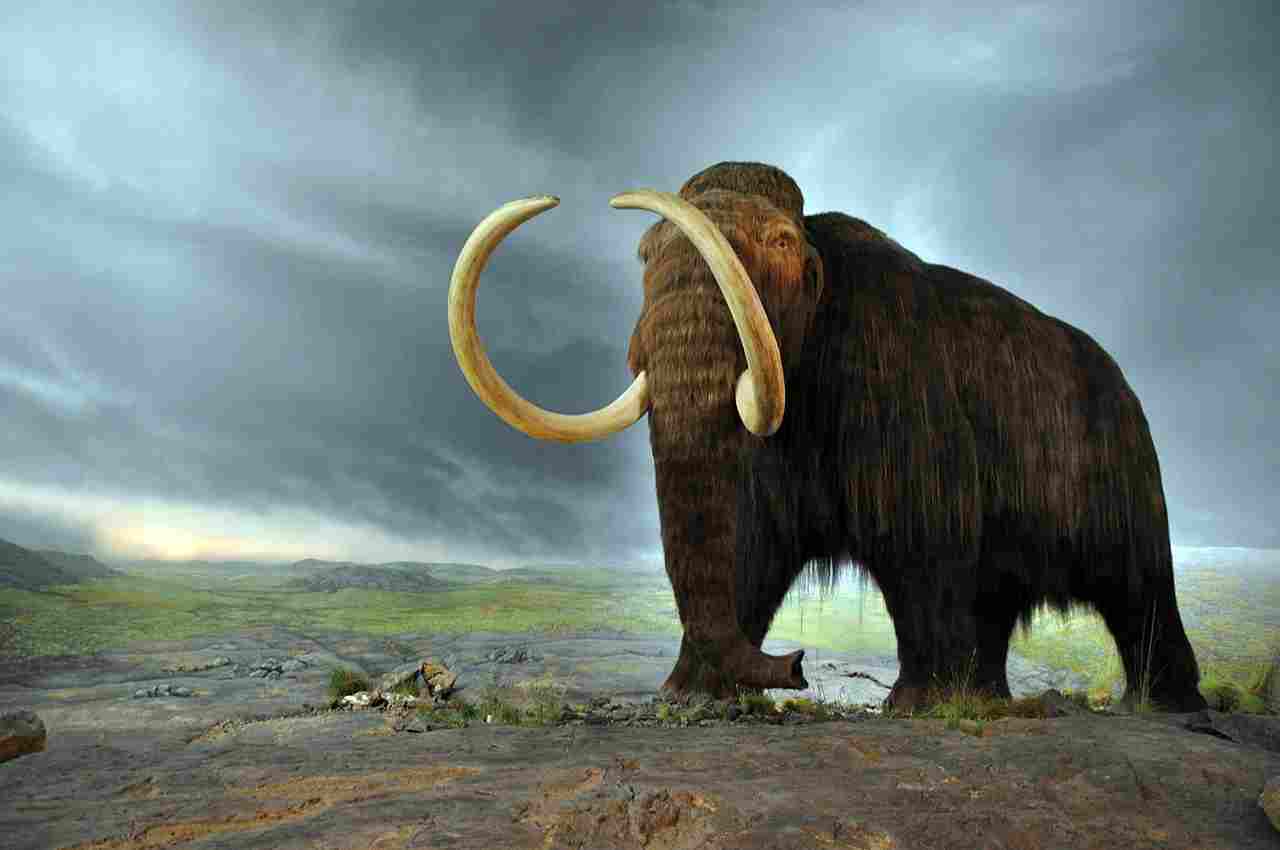
4). Weight
When comparing the weight of elephants and mammoths, it is important to consider their size and build. Both animals are known for their impressive weight, but there are some differences between them.
Elephants are known to be heavy animals, with the average weight of an adult African elephant ranging from 5,000 to 14,000 pounds. The weight of an Asian elephant can range from 4,500 to 11,000 pounds. These massive creatures have a sturdy build and are supported by strong bones and muscles.
Mammoths, on the other hand, were even more massive in terms of weight. The average weight of a woolly mammoth is estimated to be around 6 to 8 tons, which is equivalent to 12,000 to 16,000 pounds. Some larger mammoths could weigh up to 12 tons or more. Their weight was supported by their thick, woolly coats and robust bodies.
In other studies, much lower weight values may be provided. It is important to note that this depends on the species and/or specimen being referred to, and the components (such as tusks, woolly coat) being included or excluded from the measurement.
In terms of weight, mammoths had the slight advantage over elephants. Their larger size and heavier build allowed them to exert more force and have a greater impact.
5). Speed and Agility
Elephants are known for their impressive size and strength, but they are not particularly fast or agile animals. They have a lumbering gait and can reach speeds of up to 25 miles per hour, but only for short distances. Their large bodies and heavy build make it challenging for them to maneuver quickly.
On the other hand, mammoths were also not known for their speed and agility. While they were larger and heavier than elephants, their build was more robust and suited for colder climates. Mammoths had a slower walking pace compared to elephants and were not built for quick movements or agility.
It is important to note that both elephants and mammoths were adapted to their respective environments, and their physical characteristics reflected these adaptations. Elephants, with their size and strength, were well-suited for navigating through dense forests and using their strength for various tasks. Mammoths, with their larger size and heavier build, were adapted to survive in colder climates and had features such as long, shaggy hair and curved tusks.
While elephants and mammoths are/were both large and powerful, neither were particularly fast or agile. Their physical characteristics were more suited for their specific environments and lifestyles rather than speed and agility.
6). Bite Force
When comparing the bite force of elephants and mammoths, it is important to consider their physical characteristics and adaptations. Both animals had powerful jaws and large, sharp teeth, but their bite force differed due to variations in their diets and lifestyles.
Elephants primarily feed on vegetation, using their trunks to grasp and tear apart plant material. While they have strong jaws, their bite force is not as significant as one might expect. This is because their teeth are adapted for grinding rather than tearing flesh or crushing bones.
On the other hand, mammoths had a more diverse diet that included grasses, shrubs, and even some meat. Their teeth were larger and more robust, allowing them to exert a greater bite force. This was necessary for tearing apart tougher vegetation and potentially capturing prey.
In terms of bite force, mammoths had the advantage over elephants due to their larger and more specialized teeth. However, it is important to note that bite force does not determine the outcome of a physical confrontation between these animals, since they are/were not carnivorous or predatory. Other factors such as size, strength, and overall physical capacity play more significant roles.
7). Overall Physical Capacity (Which is Stronger?)
When comparing the overall physical capacity of elephants and mammoths, it is clear that the mammoth is slightly stronger based on the factors we have evaluated and compared. However, it is important to note that the outcome of a violent confrontation between these animals may differ considerably depending on specific cases, especially since the physical differences between them are minimal.
In terms of size and weight, mammoths were generally larger and heavier than elephants. This gave them an advantage in terms of sheer strength and power. Additionally, mammoths had more robust and specialized teeth, allowing them to exert a greater bite force. This, combined with their diverse diet that included tougher vegetation and even some meat, further contributed to their overall physical capacity.
On the other hand, elephants are known for their incredible strength and endurance. They have the ability to carry heavy loads and can use their trunks to uproot trees or push objects with great force. Their size and weight, although slightly smaller than mammoths, still make them formidable creatures.
Therefore, while the mammoth may have a slight edge in terms of overall physical capacity, the outcome of a violent confrontation between these animals would depend on various factors such as size, strength, and specific circumstances.
8). Habitat
Elephants are primarily found in Africa and Asia, where they inhabit a variety of habitats such as savannas, forests, and grasslands. They are highly adaptable and can survive in both wet and dry environments. Elephants are known to migrate in search of food and water, covering vast distances in the process.
Mammoths, on the other hand, were predominantly found in the colder regions of the Northern Hemisphere, including parts of Europe, Asia, and North America. They thrived in the tundra and steppe environments, which were characterized by cold temperatures and vast grasslands. These habitats provided mammoths with an abundance of grasses and other vegetation, which formed the bulk of their diet.
The contrasting habitats of elephants and mammoths influenced their physical adaptations. Elephants developed long trunks to reach high branches and dig for water in dry environments, while mammoths evolved long, curved tusks to scrape away snow and ice and access vegetation in their cold habitats.
Drawing from the above discussion, the habitat of elephants and mammoths played a crucial role in shaping their physical characteristics and behaviors. While elephants adapted to a wide range of environments in Africa and Asia, mammoths thrived in the colder regions of the Northern Hemisphere.
9). Lifespan
Elephants have an average lifespan of around 60 to 70 years in the wild, although some individuals have been known to live up to 80 years. This longevity can be attributed to their social structure, where older individuals provide knowledge and guidance to the younger members of the herd.
On the other hand, the lifespan of mammoths is more difficult to determine due to their extinction thousands of years ago. However, based on fossil evidence and studies of their modern-day relatives, such as elephants, it is estimated that mammoths had a similar lifespan to elephants. This means that mammoths likely lived for several decades, with some individuals reaching their 60s or 70s.
The lifespan of both elephants and mammoths is influenced by various factors, including genetics, diet, and environmental conditions. It is important to note that these estimates are based on the average lifespan and individual variations can occur.
Both elephants and mammoths had relatively long lifespans, with elephants living for around 60 to 70 years and mammoths likely having a similar lifespan. The social structure and environmental adaptations of these animals contributed to their longevity in their respective habitats.
10). Behavior
When comparing the behavior of elephants and mammoths, several key aspects come into play: feeding, aggression, vocalization, social behavior, and parenting.
In terms of feeding, both elephants and mammoths are/were herbivores, primarily consuming grasses, leaves, and other vegetation. Their diets are similar, with both species having a preference for certain types of plants based on availability and nutritional value.
Aggression is another behavior that can be compared between elephants and mammoths. Both species have been known or predicted to occasionally exhibit aggressive behavior, especially when defending their young or their territory. However, due to the lack of direct observation of mammoths, it is difficult to determine the extent of their aggression compared to elephants.
Vocalization is an important aspect of communication for both elephants and mammoths. Elephants use a variety of vocalizations, including trumpeting, rumbling, and growling, to communicate with each other. While there is no direct evidence of mammoth vocalizations, it is likely that they had similar communication methods.
Social behavior is a significant aspect of both elephants and mammoths. Both species live in social groups, with elephants forming tight-knit family units led by a matriarch. Mammoths likely had a similar social structure, with individuals living in herds and exhibiting cooperative behavior.
Parenting is another behavior that can be compared between elephants and mammoths. Both species show strong parental care, with females taking care of their young and older individuals providing guidance and protection.
While there are similarities in behavior between elephants and mammoths, the exact details of mammoth behavior are still largely unknown. However, based on what we know about elephants, it is likely that mammoths exhibited similar behaviors in their respective habitats.
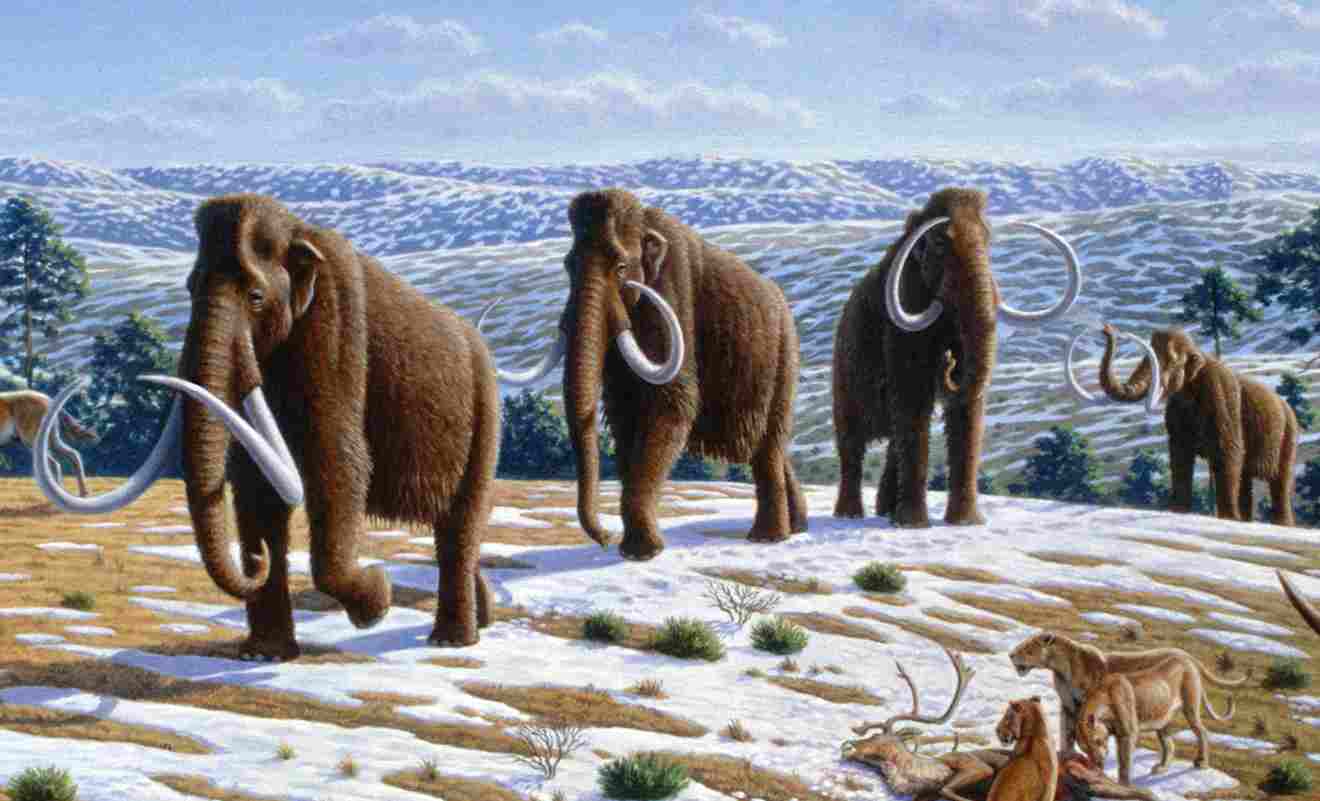
11). Reproduction
When comparing the reproduction of elephants and mammoths, there are several key factors to consider. Both species are viviparous, meaning they give birth to live young rather than laying eggs.
In terms of gestation, elephants have a longer gestation period compared to most mammals, lasting around 22 months. This extended period is necessary for the development of the large and complex elephant calves. However, the exact gestation period of mammoths is still uncertain due to the lack of direct observation.
When it comes to the comparison of the animals, the reproductive process of mammoths is believed to have been similar to that of elephants. They would have had a similar reproductive anatomy and likely gave birth to single calves. However, due to the limited information available on mammoth reproduction, further research is needed to fully understand the similarities and differences between the two species.
Therefore, both elephants and mammoths are viviparous and give birth to live young. While elephants have a longer gestation period, the exact details of mammoth reproduction are still largely unknown. Further studies and discoveries are necessary to shed more light on this aspect of mammoth biology.
12). Danger Posed to Humans
Elephants are known to come into close proximity to human settlements, especially in areas where their natural habitat has been encroached upon. While they are generally peaceful animals, they can become aggressive if they feel threatened or if their young are in danger. However, instances of elephants attacking humans are relatively rare, and most encounters can be avoided by maintaining a safe distance and respecting their space.
On the other hand, mammoths, being extinct for thousands of years, do not pose any direct danger to humans today. However, it is worth noting that during the time when mammoths roamed the Earth, early humans may have encountered them and potentially faced similar risks as with elephants.
In terms of the rate of human deaths caused by elephants, it is estimated that around 500 people are killed each year due to elephant-related incidents. These incidents can include trampling, charging, or other aggressive behaviors. Precautions to take if you encounter an elephant include staying calm, avoiding sudden movements, and slowly backing away from the animal.
While both elephants and mammoths have the potential to pose a danger to humans, elephants are the only species that currently exist and therefore have a direct impact on human safety.
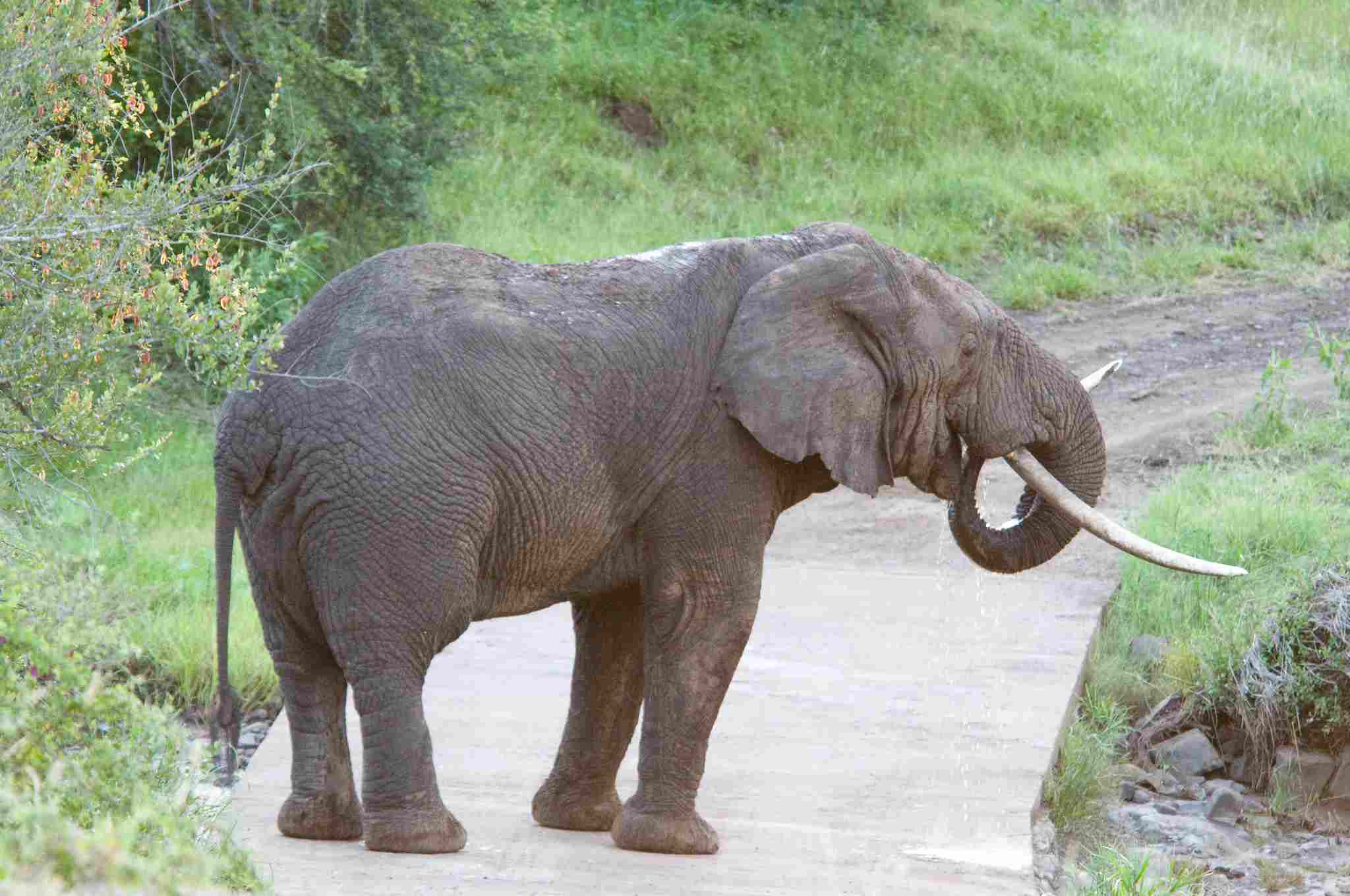
13). Intelligence
When it comes to intelligence, both elephants and mammoths exhibit remarkable cognitive abilities. They possess complex social structures and display a range of behaviors that indicate a high level of intelligence. However, comparing the intelligence of these two magnificent creatures is not a straightforward task.
Elephants are known for their exceptional memory, which allows them to remember specific locations of water sources and navigate through their vast habitats. They also exhibit problem-solving skills, using tools such as branches to swat away insects or dust to protect themselves from the sun. Their ability to communicate through a variety of vocalizations and body language further demonstrates their intelligence.
Mammoths, on the other hand, share many of these traits with elephants. They too had a highly developed memory, enabling them to remember migration routes and locate food sources. Their social structures were also intricate, with strong family bonds and cooperative behaviors. While we don’t have as much information about their problem-solving abilities, their survival in diverse environments suggests a level of adaptability and intelligence.
In comparing the intelligence of elephants and mammoths, it is important to consider the context of their respective time periods. Mammoths lived during the Ice Age, facing unique challenges and environmental conditions. Elephants, on the other hand, have adapted to a changing world and continue to demonstrate their intelligence in various ways.
14). Tracks
When comparing the tracks of elephants and mammoths, there are some notable differences. The size and shape of their footprints provide valuable insights into their physical characteristics and behavior.
Elephant tracks are characterized by their large size and distinct shape. Their footprints typically have a round or oval shape, with four toes at the front and a large pad at the back. The depth of the tracks can vary depending on the terrain and the weight of the elephant, but they are generally deeper than those of most other animals. The width of the tracks is also significant, as it reflects the width of the elephant’s feet and the distribution of its weight.
Mammoth tracks, on the other hand, share similarities with elephant tracks but have some distinct features. Mammoth footprints are generally larger than those of elephants, reflecting their overall size difference. They also have a similar round or oval shape, with four toes at the front and a large pad at the back. However, mammoth tracks often show more hair impressions, indicating the presence of their long, shaggy fur.
Studying the tracks of elephants and mammoths can provide valuable information about their movement patterns, speed, and behavior. By analyzing the depth, width, and shape of their footprints, researchers can gain insights into their size, weight, and overall physical capacity.
15). Conservation Status
When it comes to the conservation status of elephants and mammoths, both species face significant challenges. They are either “endangered,” “threatened,” or extinct, indicating the urgent need for conservation efforts to protect the remaining populations.
For elephants, the main threats to their survival in the wild include habitat loss, poaching for ivory, and human-wildlife conflict. The destruction of their natural habitats due to deforestation and urbanization has resulted in a significant decline in their numbers. Additionally, the illegal ivory trade continues to drive poaching activities, further endangering their existence. Human-wildlife conflict, often arising from competition for resources, poses another threat to elephant populations.
Mammoths, on the other hand, faced extinction thousands of years ago. The main cause of their extinction was climate change, specifically the warming of the Earth’s climate during the last Ice Age. As the environment changed, their habitats became inhospitable, leading to a decline in their population and eventual extinction.
While elephants are currently facing conservation challenges, mammoths are extinct and cannot be directly conserved. However, there are ongoing scientific efforts to study their DNA and potentially revive the species through genetic engineering.
Conclusion
I). SIMILARITIES
In comparing elephants and mammoths, it is evident that these majestic creatures share several similarities. Both elephants and mammoths belong to the same taxonomic family, Elephantidae, and share similar appearances with their large bodies, long trunks, and tusks. They also exhibit social behavior, living in herds and displaying complex communication patterns. Additionally, both species have a significant impact on their ecosystems, shaping the landscape and influencing plant growth.
II). DIFFERENCES
While there are similarities between elephants and mammoths, there are also notable differences that set them apart. One of the most significant differences is their size. Mammoths were generally larger than elephants, with some species reaching heights of up to 14 feet at the shoulder. In contrast, the largest elephants today reach heights of around 13 feet. Another difference lies in their habitats. Mammoths were adapted to cold environments, while elephants thrive in warmer climates.
Furthermore, their conservation status differs greatly. Elephants are currently facing conservation challenges due to habitat loss and poaching, while mammoths became extinct thousands of years ago due to climate change. Lastly, their behavior and intelligence may have varied, with mammoths potentially exhibiting different social structures and cognitive abilities.
